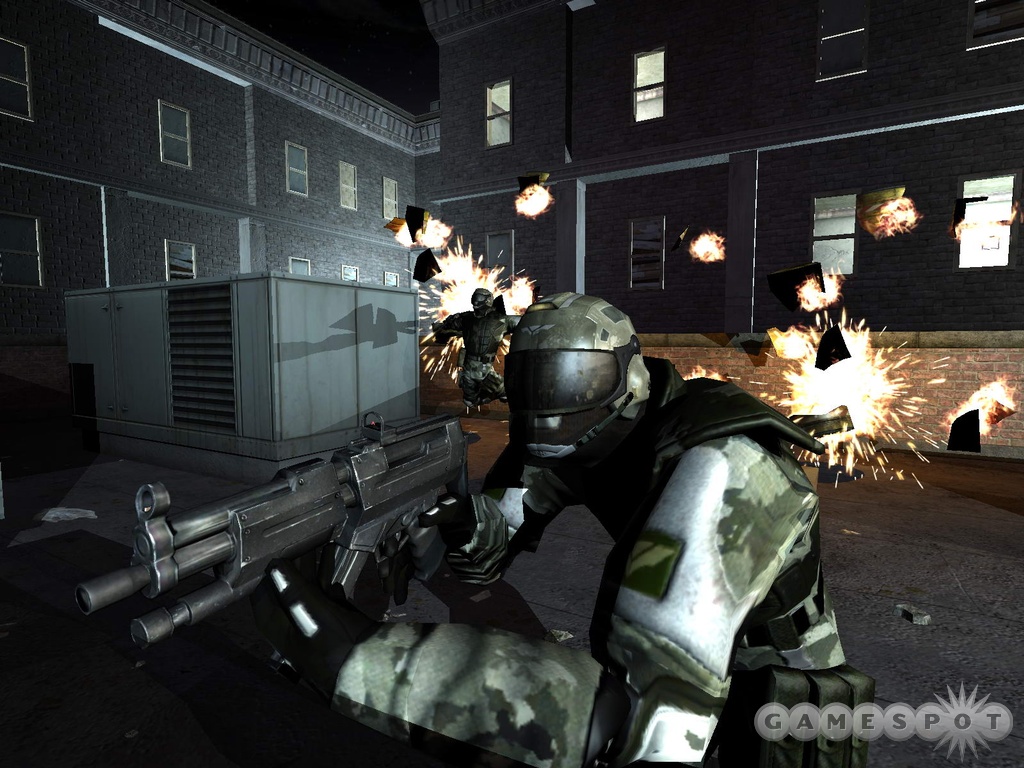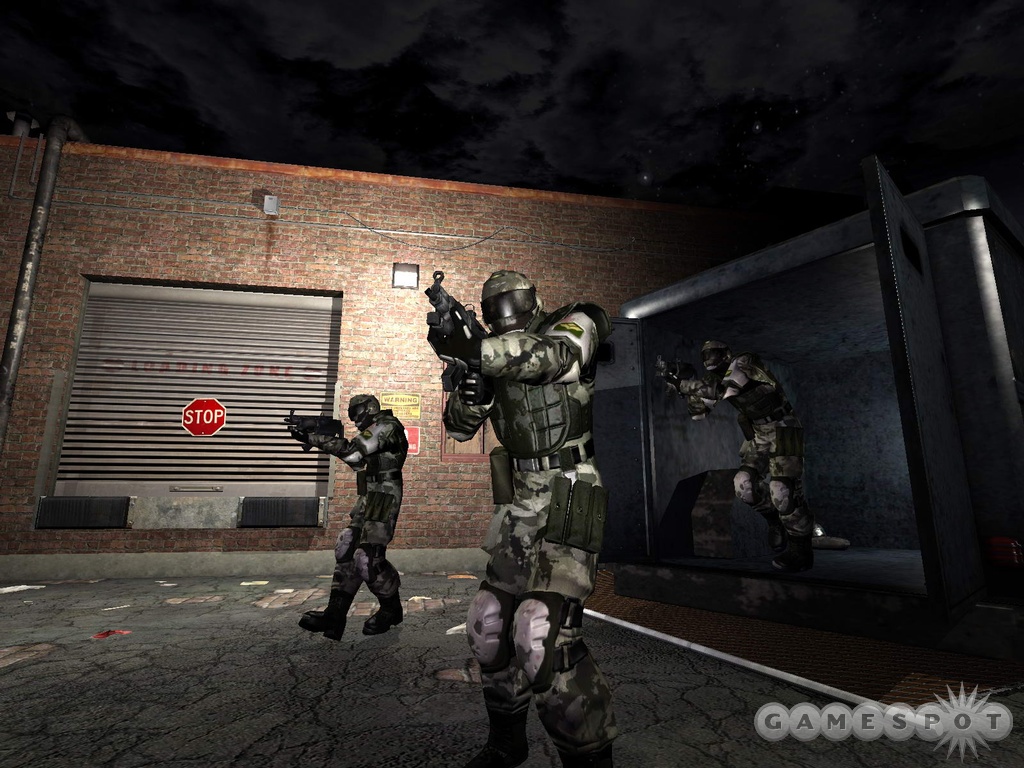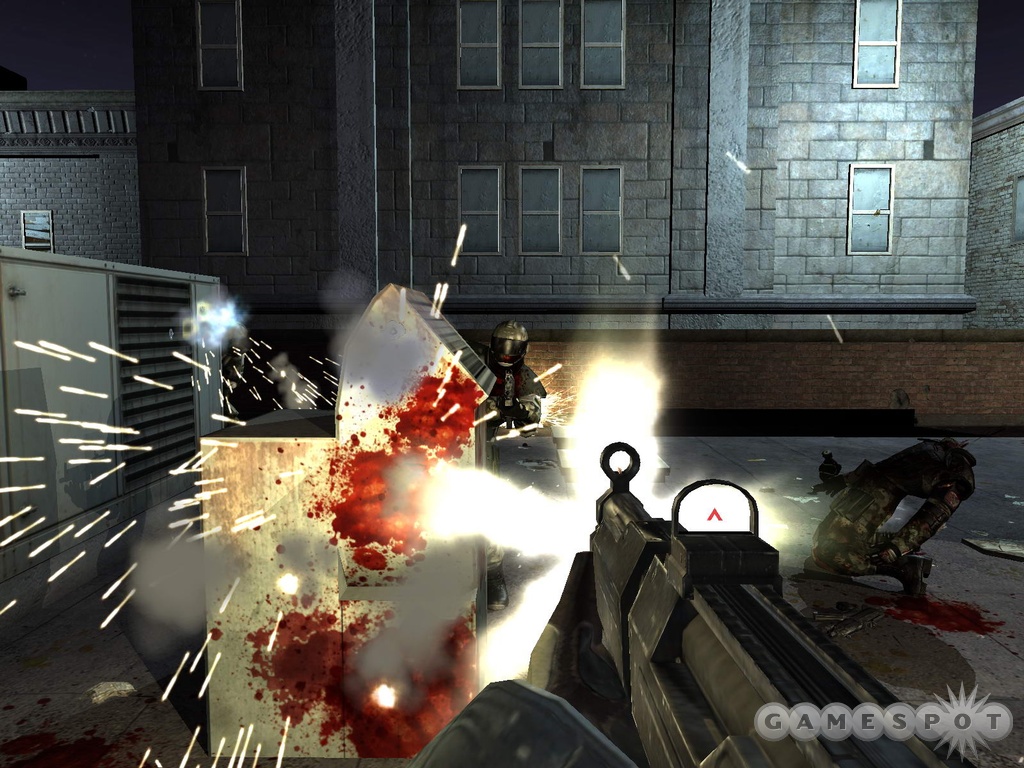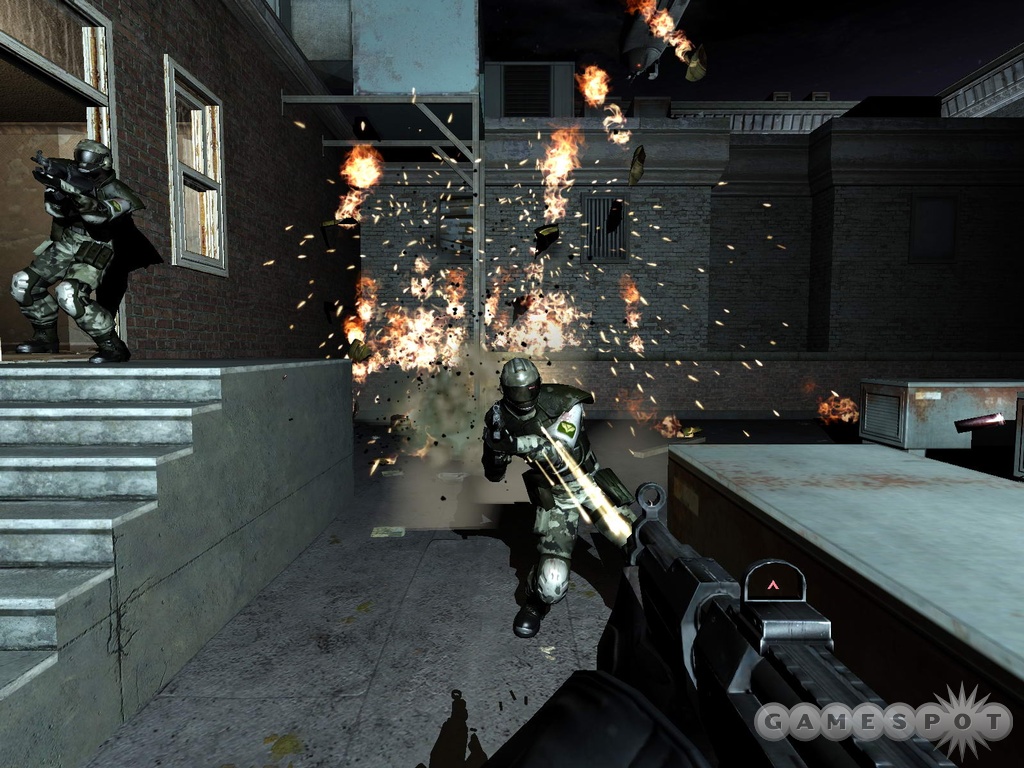F.E.A.R. Q&A - Updated Single-Player Info, AI, and Explosions Galore
We catch up with lead designer Craig Hubbard and try and get him to spill the beans about his highly anticipated action game.
It's been nearly a month since it was released, but gamers are still buzzing about the single-player demo of F.E.A.R.--and for good reason. This upcoming first-person shooter from VU Games and Monolith promises to deliver some intense gunfights, along with plenty of scary moments. That's because F.E.A.R. could best be described as a combination of Half-Life and the horror movie, The Ring. If you've played the demo, odds are you have many of the same questions that we do regarding this intriguing game. So we caught up with Craig Hubbard, the lead designer of F.E.A.R. himself, to get the latest details on the game, which is scheduled to ship this winter.

GameSpot: We know that you don't want to spoil the story, but what can you tell us about your character and his abilities and history? It's hinted at during the opening level that you're "new" to the F.E.A.R. team, but there seem to have been hints in the opening levels of the game we played that your character isn't a just a regular old highly trained special agent. Will your character have a "face" that you'll see in the game, or will you more or less be hidden behind a helmet and mask the entire time?
Craig Hubbard: It was a conscious decision not to give the player an identity. We wanted players to be able to become the protagonist without any reminders that they're supposed to be someone else. We hoped it would add to player immersion not to see somebody else's face in mirrors or be called someone else's name.
It probably sounds like an obvious and not especially daring thing to do, but it's been the biggest challenge I've faced as a writer. Trying to tell a story almost entirely in-game from the first-person perspective with a silent protagonist is, quite frankly, a hell of a thing. All the devices I've always relied on as a storyteller went right out the window, because there was no way to guarantee players would be looking in the right place at the right time to see what I needed them to see.
In a game like Half-Life, it works out because the premise justifies why the protagonist doesn't have much information about what's going on. For F.E.A.R. it was harder because players expected to know what was going on and why. It took a lot of play testing and refinement to strike a good balance.
GS: We meet at least three of our teammates during the briefing in the demo: Rowdy, Jankowski, and Jin. What can you tell us about them and their roles in the game, outside of the occasional cooperative support and appearances in cinematic scenes that we've already seen so far? Are there any other team members, or other crucial characters, that we haven't met yet?
CH: Jin, Jankowski, and Betters are the core team members, but F.E.A.R. is all about the player's experience, so they stick to supporting roles. We originally considered having your teammates participate more directly, but that wasn't really the focus of the game. The more time we spent on giving them cool things to do, the less time we would have had to spend giving the player cool things to do.
There are other major characters you haven't seen yet, but I'd rather let them speak for themselves.
GS: At least one of the enemies in the early going seems to have the same ability to slow time as you do. Will we encounter more such enemies or enemies with other additional powers? Are there any other "powers" for the player character that are yet to be revealed?

CH: The idea isn't that time is literally slowing down but rather that your perception of it is changing due to your reflexes and your skill as a soldier. Think of it as profound situational awareness paired with exceptional agility.
You don't have any other powers in the game.
GS: Seriously, what is with that freaky little girl? What can you tell us about her connection to your character and to Paxton Fettle (who seems to imply that he shares memories with her)? And what was that thing that dropped out of the ceiling at the very end of the demo?
CH: You're just going to have to play the game to find out!
Feel the F.E.A.R.
GS: What's the difference between the difficulty levels in the game? Are enemies smarter or just tougher to take down? Will your weapons decrease in effectiveness or accuracy? Playing times will obviously vary, but how long would you say that it takes to get through the game for an average player? 
CH: For enemies, difficulty primarily affects how much damage they can sustain and how much they inflict. Their behavior isn't really affected, because we wanted players to get the full experience regardless of how skilled they might be.
Difficulty also affects health recovery, which kicks in if your hit points get below a certain threshold. For example, on normal difficulty, if you get down below 25 percent, your health begins to tick back up to prevent you from being stuck at one hit point. The rate at which you regenerate and the amount of health you get back scales with difficulty.
GS: How important is it to collect all those boost power-ups that permanently increase your health or stamina? Will you need to make sure to collect all of those to have a chance at the end, particularly at the harder difficulty levels?
CH: You can get through the game without them, but it definitely makes it easier and more fun if you're collecting them. Obviously, the more you play the game, the more skilled you'll become. But those gains are offset somewhat because we're simultaneously ramping up the difficulty with tougher enemies and situations. So the idea of the boosters is to give you an extra edge and let you play a little more recklessly and aggressively as you get further into the game.
GS: Tell us about the artificial intelligence behind F.E.A.R.'s enemies. So far, the AI seems elusive, smart, challenging, and highly realistic (in an over-the-top motion-picture kind of way). In fact, the AI has seemed genuinely surprising every so often, considering the way enemies peek around corners, hop over guardrails, crawl under low surfaces, and drag bookshelves and boxes in front of them as cover. Was this patterned after the tactics or training of any real-world military or law enforcement group? How did the team go about making the AI actually act and move, attack, and respond in such a "realistic" fashion? How has the team been able to implement such sophisticated AI without having things break and having soldiers do unexpected things, like getting stuck on walls (which we haven't seen once, despite the many times we've played the game)?
CH: There are plenty of games where you're part of a special forces team. We wanted to pit you against a special forces team. To pull that off, it was important that enemies communicate and coordinate with each other and use authentic-looking tactics. This isn't a military simulation, though. It's much more of an action movie, so our AI behavior is geared toward fun rather than accuracy.
Enemies have an understanding of the environment, which tells them where they can go, where to find cover, where to hide if things get too tough, where to search for the player if they don't know where he is, etc. They also perceive visual and audio stimuli and can communicate information to each other about what they're seeing or experiencing. They make decisions on the fly about how to react to a given situation based on the opportunities available to them. So their thought process is kind of similar to that of a player.
GS: How has multiplayer been shaping up? What are your thoughts on focusing multiplayer squarely on head-to-head competition rather than recent, popular team-based games, which offer things like drivable vehicles and objective-based levels? How will F.E.A.R.'s multiplayer be strong enough to keep players coming back for more, despite the many different kinds of multiplayer shooter that are out there today?
CH: Well, you have to build the house before you hang the curtains. When we started working on multiplayer, we were still figuring out what the game was going to be and how it was going to play, so it didn't make sense to plan out some elaborate objective-based mode that might not fit with the end product. Instead, we decided to start with deathmatch, team deathmatch, and elimination modes as a foundation and go from there. As soon as slow-mo got into the single-player game, we started brainstorming about how to bring it over to multiplayer, which led to slow-mo variants of the existing modes. Later, during the beta testing phases, capture the flag was by far the most requested addition, so that's what we focused on next.
We don't have any illusions of F.E.A.R. competing head-to-head with established multiplayer-oriented franchises, like Counter-Strike or Battlefield. But that was never the goal. It's always been about doing what makes sense for the game and what we felt we could do well with the resources we had. The bottom line is that nobody is going to play a half-assed CounterStrike knockoff, but some people might get into a polished team deathmatch with its own distinct flavor in a new game universe. And, as I mentioned, we now have a solid foundation to build from, so who knows what the future may hold.

GS: The demo seems to demand quite a bit of computing power at the highest settings. That said, the frame rate has improved quite a bit from the early looks at the game that we've had, which, truth be told, seemed to have had a few issues. Are there still code optimizations that you can make so that the game will run even more smoothly? And what are you looking at in terms of minimum requirements?
CH: We're constantly making optimizations to improve performance. With F.E.A.R, we wanted to provide a next-generation gaming experience with an engine that pushed the capabilities of the DirectX 9 family of cards to the limit. That being said, we also wanted to include a DirectX 8 renderer to make sure that people who don't have a bleeding-edge system can play the game and still get good performance.
GS: Thanks, Craig.
Got a news tip or want to contact us directly? Email news@gamespot.com
Join the conversation